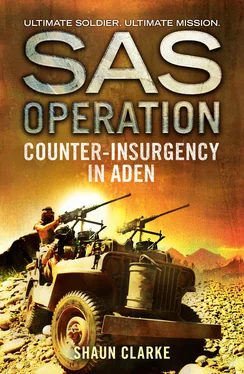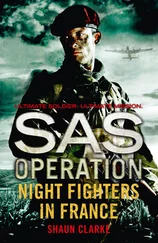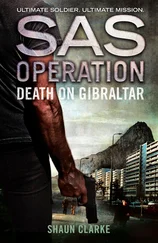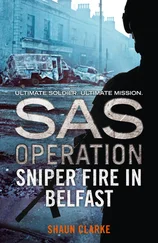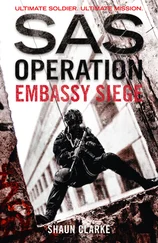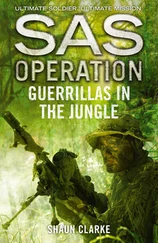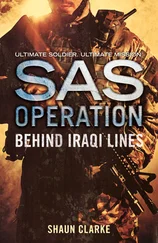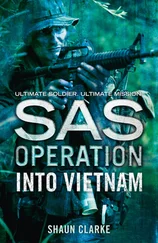Counter-insurgency in Aden
SHAUN CLARKE
Published by HarperCollins Publishers Ltd
1 London Bridge Street
London SE1 9GF
www.harpercollins.co.uk
First published in Great Britain by 22 Books/Bloomsbury Publishing plc 1994
Copyright © Bloomsbury Publishing plc 1994
Cover layout design © HarperCollins Publishers 2016
Cover Photographs © www.piciubrothers.altervista.org(main image); Shutterstock.com (textures)
Shaun Clarke asserts the moral right to be identified as the author of this work.
A catalogue copy of this book is available from the British Library.
This novel is entirely a work of fiction. The names, characters and incidents portrayed in it are the work of the author’s imagination. Any resemblance to actual persons, living or dead, events or localities is entirely coincidental.
All rights reserved under International and Pan-American Copyright Conventions. By payment of the required fees, you have been granted the non-exclusive, non-transferable right to access and read the text of this e-book on screen. No part of this text may be reproduced, transmitted, down-loaded, decompiled, reverse engineered, or stored in or introduced into any information storage and retrieval system, in any form or by any means, whether electronic or mechanical, now known or hereinafter invented, without the express written permission of HarperCollins.
Source ISBN: 9780008155063
Ebook Edition © November 2015 ISBN: 9780008155070
Version: 2015-10-29
Contents
Cover
Title Page
Copyright Published by HarperCollins Publishers Ltd 1 London Bridge Street London SE1 9GF www.harpercollins.co.uk First published in Great Britain by 22 Books/Bloomsbury Publishing plc 1994 Copyright © Bloomsbury Publishing plc 1994 Cover layout design © HarperCollins Publishers 2016 Cover Photographs © www.piciubrothers.altervista.org (main image); Shutterstock.com (textures) Shaun Clarke asserts the moral right to be identified as the author of this work. A catalogue copy of this book is available from the British Library. This novel is entirely a work of fiction. The names, characters and incidents portrayed in it are the work of the author’s imagination. Any resemblance to actual persons, living or dead, events or localities is entirely coincidental. All rights reserved under International and Pan-American Copyright Conventions. By payment of the required fees, you have been granted the non-exclusive, non-transferable right to access and read the text of this e-book on screen. No part of this text may be reproduced, transmitted, down-loaded, decompiled, reverse engineered, or stored in or introduced into any information storage and retrieval system, in any form or by any means, whether electronic or mechanical, now known or hereinafter invented, without the express written permission of HarperCollins. Source ISBN: 9780008155063 Ebook Edition © November 2015 ISBN: 9780008155070 Version: 2015-10-29
Prelude
Chapter 1
Chapter 2
Chapter 3
Chapter 4
Chapter 5
Chapter 6
Chapter 7
Chapter 8
Chapter 9
Chapter 10
Chapter 11
Chapter 12
Chapter 13
Chapter 14
Chapter 15
Chapter 16
Chapter 17
OTHER TITLES IN THE SAS OPERATION SERIES
About the Publisher
The port of Aden is located on a peninsula enclosing the eastern side of Bandar at-Tawahi, Aden’s harbour. It is bounded to the west and north-west by Yemen, to the north by the great desert known as the Rub’ al-Khali, the Empty Quarter, to the east by Oman, and to the south by the Gulf of Aden and the Arabian Sea. Though a centre of trade since the days of antiquity, and mentioned in the Bible, the city in 1964 looked less than appealing.
Standing beside his wife, Miriam, on the deck of the P & O liner Himalaya , Norman Blakely, emigrating to Australia from Winchester, where he had taught ancient history at the renowned public school, realized he had known all these facts since his own school days. He certainly recognized the features he had often read about, yet he felt a certain disappointment at what he was seeing, not least the surprising modernity of the place.
Even from this distance, beyond the many rowing boats and motor launches dotted about the mud-coloured waters of the harbour, Aden was no more than an untidy sprawl of white-painted stone tower buildings and warehouses surrounded by an ugly clutter of jibs and cranes, immense oil tanks and huge lights raised high on steel gantries – all hemmed in on two sides by the promontories of Jebel Shamsan (Aden) and Jebel Ihsan (Little Aden). Both of these short necks of bleached volcanic rock thrust out from, and were dominated by, an equally unattractive maritime mountain range that varied from 1000 to 2000 feet and was constantly shadowed by depressing grey clouds.
Rising up the lower slopes of the mountains behind the town, about a mile beyond it, was a roughly triangular maze of low, white-painted buildings, which Norman assumed was the old commercial centre known as the Crater. What he did not know – even though he and the other passengers had received a leaflet gently warning them of the ‘occasional’ dangers of Aden – is that it was the home of the most dangerous anti-British terrorists in that troublesome country.
‘If the town’s as depressing as it looks from here,’ Norman said to Miriam, ‘we’ll take a taxi up to the Crater. It’s almost certainly less commercialized than Aden proper – and hopefully more like the real thing.’
‘That leaflet said not to wander too far from the port area,’ Miriam reminded him.
‘The authorities always exaggerate these situations for their own reasons,’ Norman said with conviction. ‘In this instance, they doubtless want us to remain in the port area because that’s where all the duty-free goods are sold. They just want to make money. Such goods aren’t sold up in the Crater, so that’s where we’ll go.’
Trade in a particular kind of duty-free goods was already taking place in the water below them, where the ‘bum boats’ were packed tightly together by the hull of their ship and stacked high with a colourful collection of souvenirs and other cheap merchandise piled high in wooden crates and cardboard boxes. On offer were ‘hand-tooled’ – in fact, mass-produced – leather purses and wallets; cartons of Senior Service, Players, Woodbine and Camel cigarettes; Zenith 8×30 binoculars, sold in sealed boxes, many of which were fake and did not work; 35mm SLR cameras; transistor radios; counterfeit Rolex wristwatches; and even cartons of Colgate toothpaste. The goods were being sold by shrieking, gesticulating Arabs dressed in a colourful variety of garments, from English shirts and trousers to sarongs and turbans, though all wore thongs about their legs.
The Arabs were bartering by shouting preliminary prices and sending their wares up for inspection in baskets tied to ropes that had been hurled up to the passengers, who had obligingly tied them to the ship’s railing. The individual passenger then either lowered the goods back down in the basket or removed them and deposited the agreed amount of money in their place.
While this noisy, good-natured barter was being conducted between the passengers and the Arab vendors below, other passengers were throwing coins into the water between the bum boats and watching Arab children dive from the jetty for them.
Ignoring these activities, Norman led his wife down the swaying gangplank to embark on the sixty-man transit boat that would take them the short distance to the quay. The latter was guarded by uniformed British soldiers, some in shorts, others in lightweight trousers, some armed with Sten guns or self-loading rifles, others with pistols holstered at their hips.
Читать дальше
